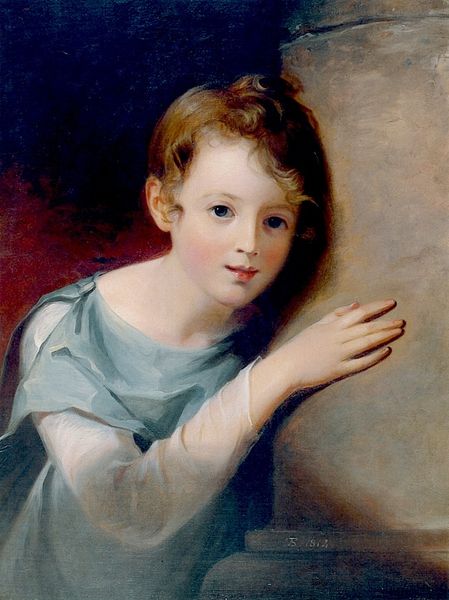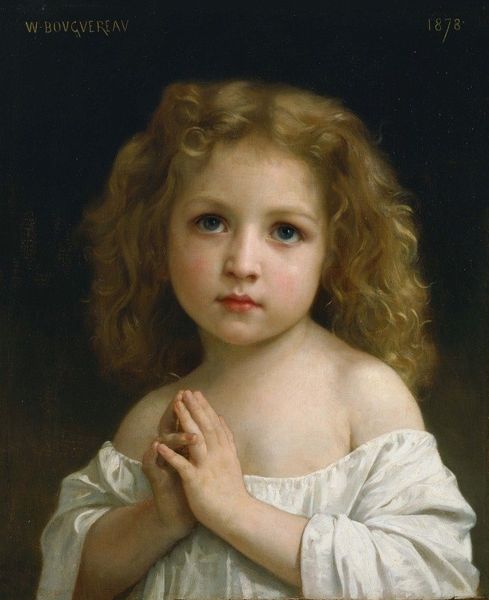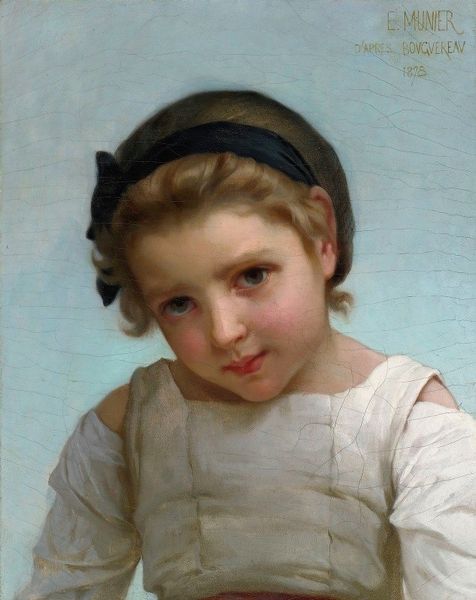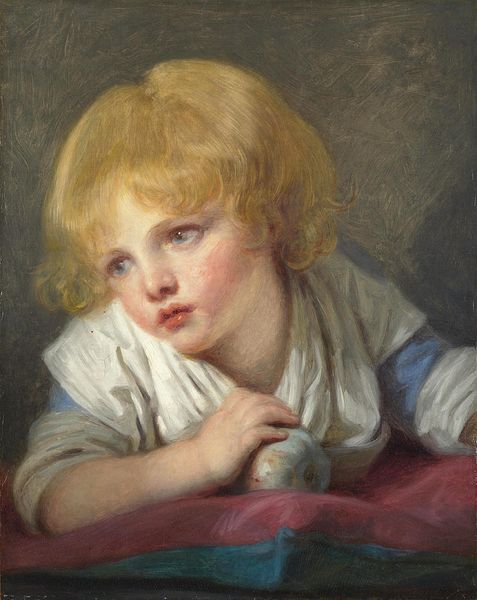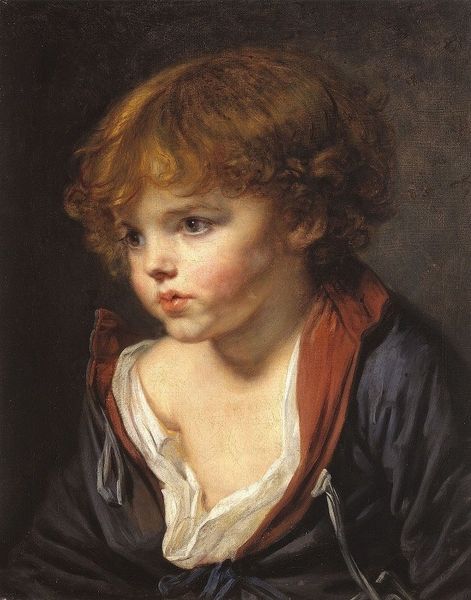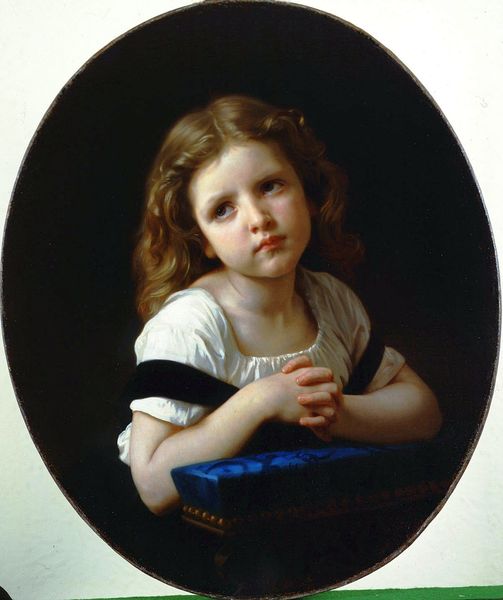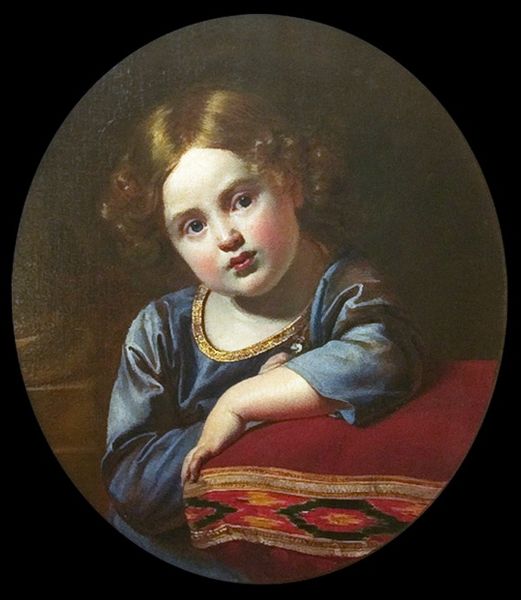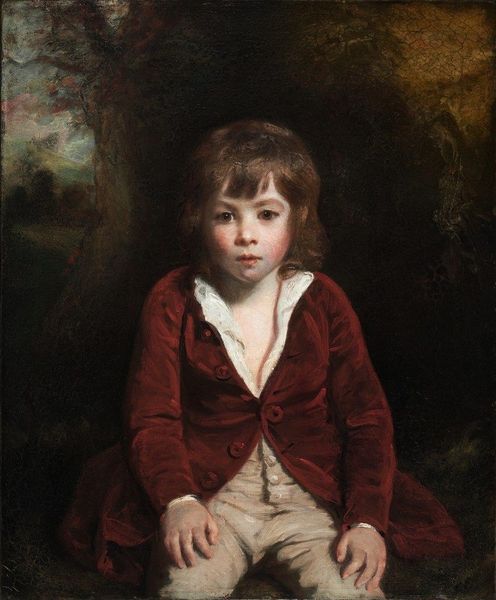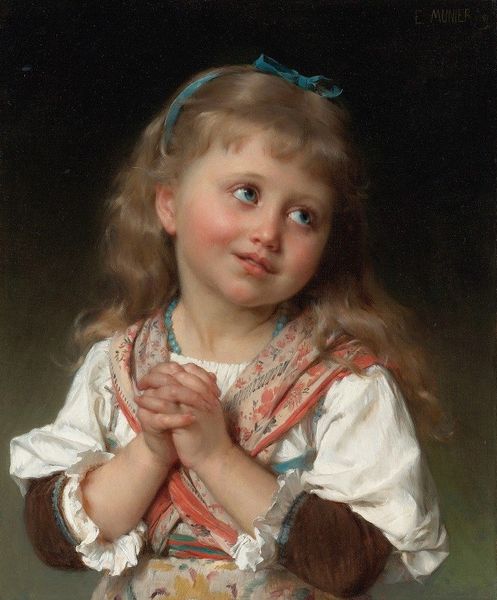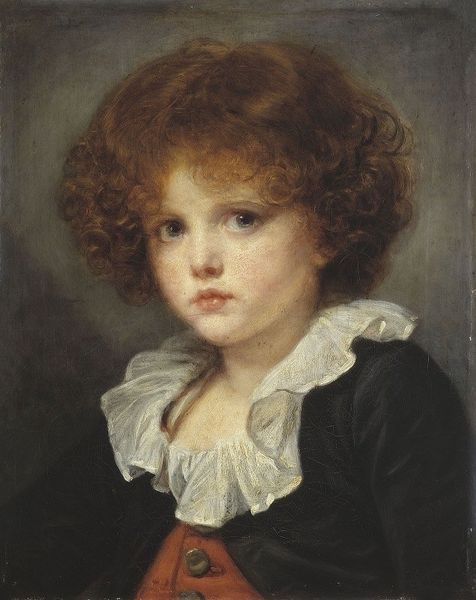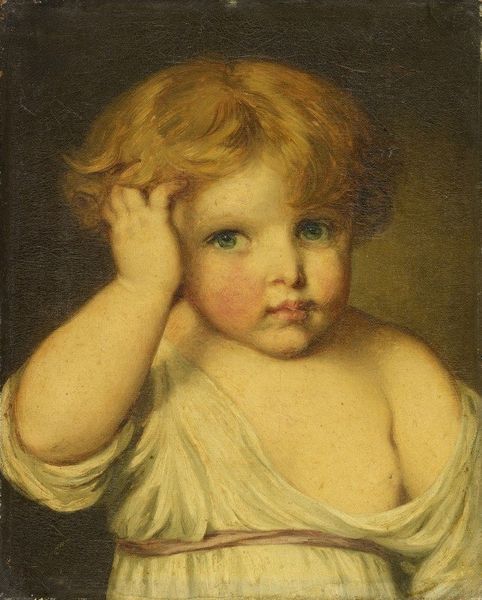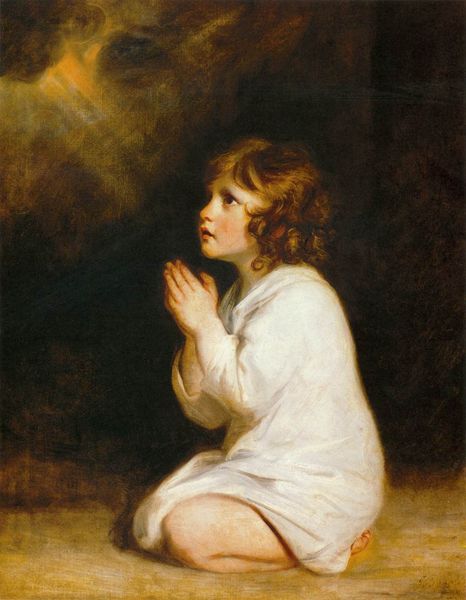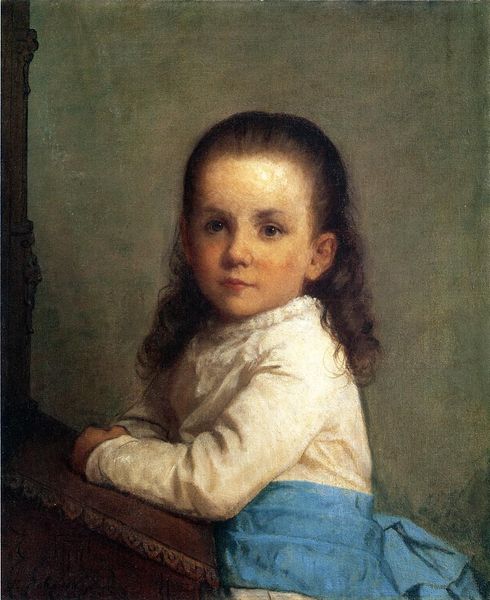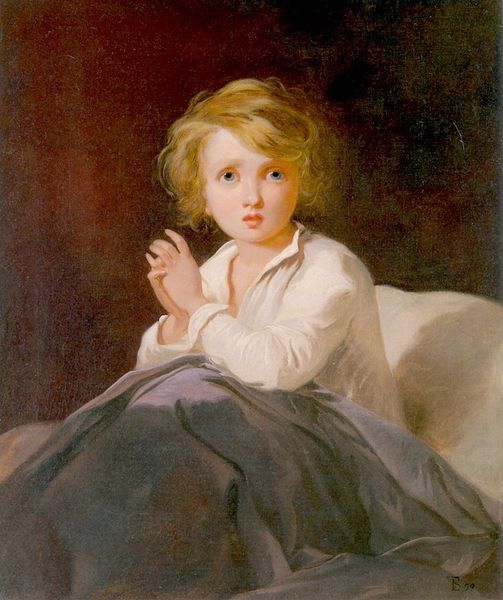
painting, oil-paint
#
portrait
#
baroque
#
dutch-golden-age
#
painting
#
oil-paint
#
genre-painting
#
realism
Copyright: Public domain
Curator: Here we have Rembrandt van Rijn's "Girl in the Window," painted in 1645. It resides here at the Dulwich Picture Gallery in London. Editor: She looks… pensively sweet. The subdued palette contributes to a gentle, almost melancholy mood, don’t you think? Curator: It's fascinating how Rembrandt constructed this scene. Oil paint allowed for such build-up and blending. Notice how he models the form of the girl against a dark space, creating a stark contrast between interior and exterior. I'm curious about the window itself as a product: was it newly manufactured glass, how was it acquired, what can the pigments tell us about availability and trade routes for the period? Editor: Yes, the play of light and shadow really draws the eye. And look at her face – the soft light illuminating her features. There is a certain archetypal "young maiden" quality, but also remarkable psychological depth. The window motif is powerful; is she awaiting someone, dreaming of escape? What feelings did it evoke in people of that period? Curator: Consider too how Rembrandt employed his students in the studio. Was this painted alone or with studio assistants, and how would collaboration affect its reception in the Dutch Golden Age art market? We should delve into Rembrandt's workshop practices to really unpack the material and social elements that are embodied within. Editor: I’m also drawn to what this image seems to be communicating about lost innocence. Windows frequently signify transitions, boundaries... childhood innocence, or maybe even a symbolic reference to a “girl on a balcony.” A subject very popular with European painters later. Curator: Ultimately, the creation and interpretation of this painting existed within a nexus of social practices: studio production, commodity exchange, gendered symbolism, and processes of image circulation. Editor: That's insightful, how those historical conditions shape visual languages, and enduring questions are echoed down through the ages, too. Curator: Indeed. Examining the materiality reminds us that there's a rich story beneath the surface representation. Editor: Absolutely, so many symbolic layers, making this much more than just a simple portrait, right?
Comments
No comments
Be the first to comment and join the conversation on the ultimate creative platform.
